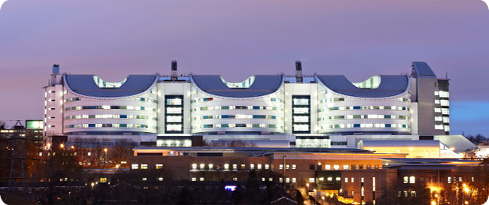Your views

Your feedback is vital to us as we continue to increase the quality of our services.
You are here:
Date: 27 January 2025
Time: 16:47

New nerve regeneration technique to be trialled at QEHB
Story posted/last updated: 07 December 2016
An innovative new technique to repair the nerves of people who have suffered serious hand injuries is to be trialled on patients at Queen Elizabeth Hospital Birmingham (QEHB).
The CONNECT (COnduit Nerve approximation versus Neurorrhaphy Evaluation of Clinical outcome Trial) study will evaluate the benefits of using “tensionless repair” to improve the quality of nerve regeneration in injured patients.
The process involves using a biodegradable nerve guide to assist the regeneration process rather than stitching severed nerve ends together directly via microsurgery, which is the current approach.
The guide, or conduit, is a small tube which is fitted around the severed nerve ends with the aim of promoting and assisting regeneration, before eventually dissolving and being safely absorbed by the body.
Around 170 patients will be recruited over the next 18 months with a third receiving the new treatment, a third the current standard treatment and the rest a combination of the two. They will be followed up a year later to see if the new technique has any significant benefits.
The trial is being backed by Dutch company Polyganics, which has developed the biodegradable NEUROLAC® nerve conduit which will be used, and will be supported by the team from the QEHB-based NIHR Surgical Reconstruction and Microbiology Research Centre – which specialises in trauma research.
Mr Dominic Power, consultant hand and peripheral nerve surgeon at the Birmingham Hand Centre, also based at QEHB, will lead the study.
He said: “Complex nerve injuries to the hand are quite common, with approximately 300,000 cases a year in Europe alone.
“However, stitching the nerve ends together directly, as we do now, causes scarring which can inhibit the regenerative process and leads to ongoing problems for 1 in 20 patients, some of whom will need further surgery.”
Mr Power continued: “We hope to show that by using a nerve conduit to bring the nerve ends together patients will experience fewer complications, less pain and achieve better sensation and functionality in their fingers following initial surgery.
“If the technique proves beneficial it can potentially be applied to other nerves elsewhere in the body.
“Birmingham has been leading the way in nerve research in the UK and I hope that the results of this study will lead to further benefits for patients worldwide.”

Getting here
Information about travelling to, staying at and getting around the hospital.

Jobs at UHB
A great place to work. Learn why.
news@UHB


RSS feed
Subscribe to our news feed


